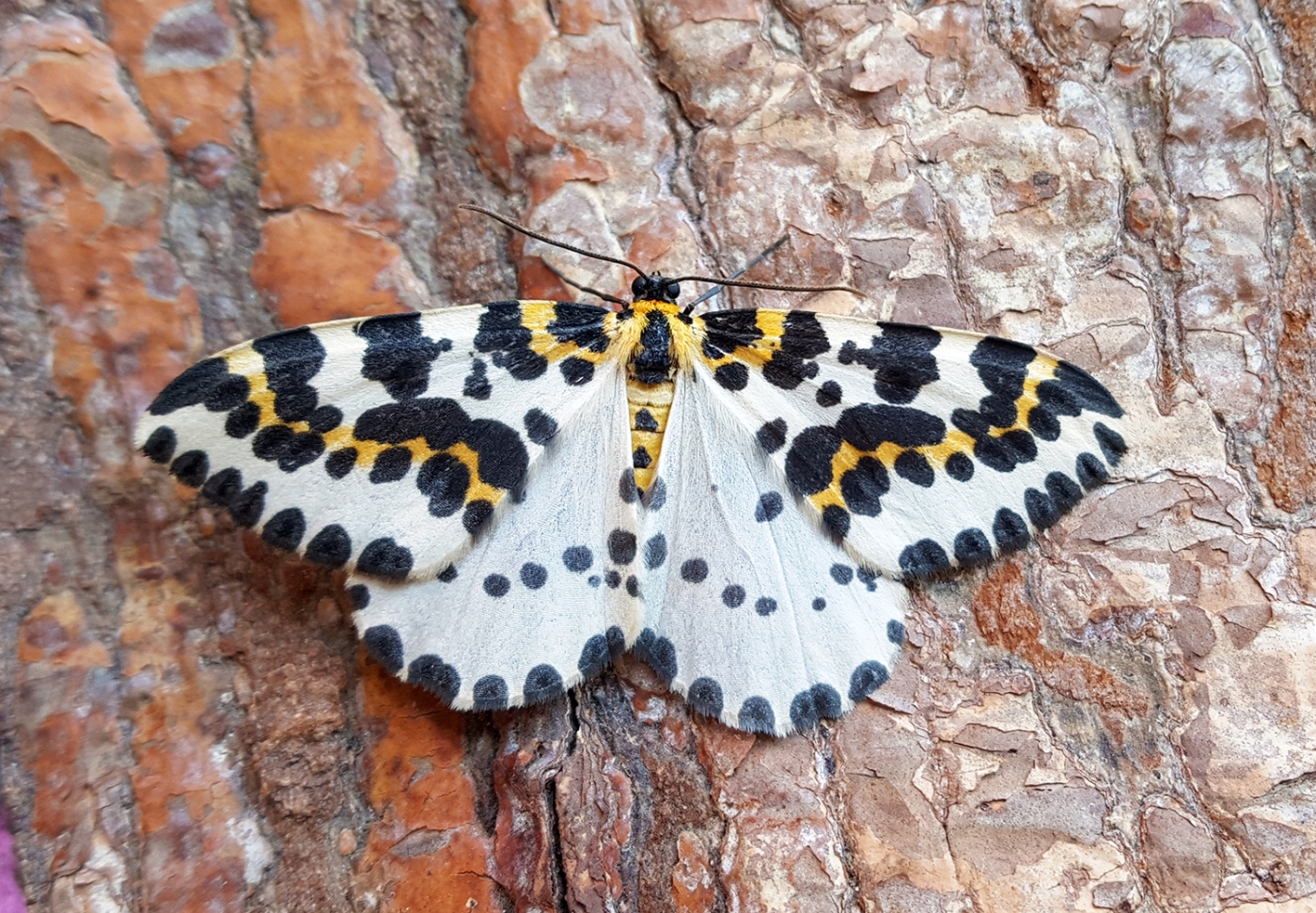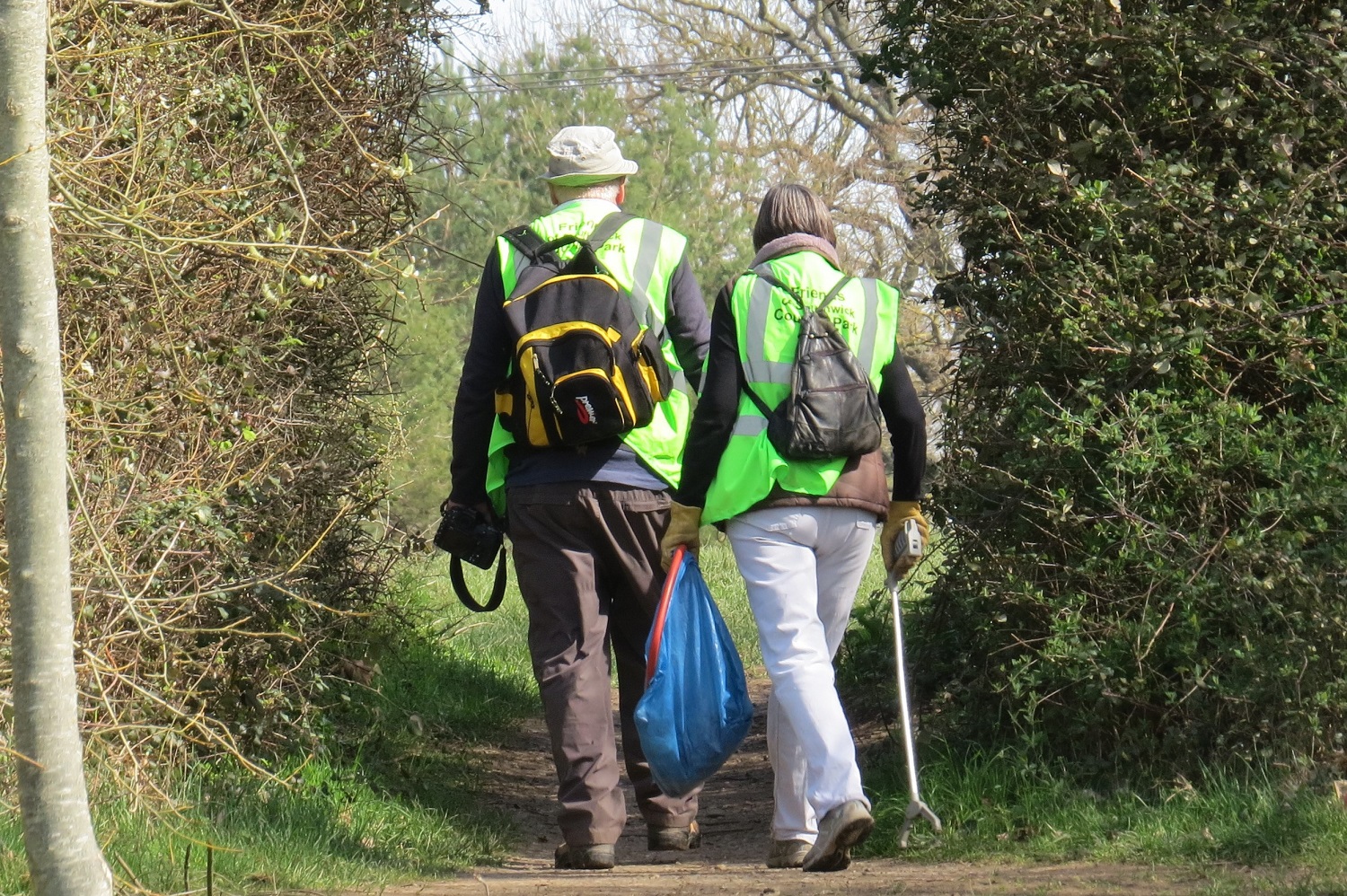A magpie moth (Abraxas grossulariata), identified in the reserve during the summer.
Adult magpie moths are night flying nectar feeders, easily attracted to light. During the day they rest on low foliage, often on the underside of a leaf and, despite their gaudy colouring, are difficult to see unless they are disturbed. Their similarly coloured caterpillars are much more easily spotted, feeding on the reserve’s blackthorn, hawthorn, hazel, spindle or bramble.
The female moth lays eggs in batches on the undersides of the leaves of a foodplant in August. The caterpillars feed from August right through the winter until May. Only some of them will enter a state of hibernation in the winter, lashed to the underside of a leaf by silk threads; the majority find food enough to see them through.
The caterpillars pupate in May and the adults emerge in late June or July, and fly until August.
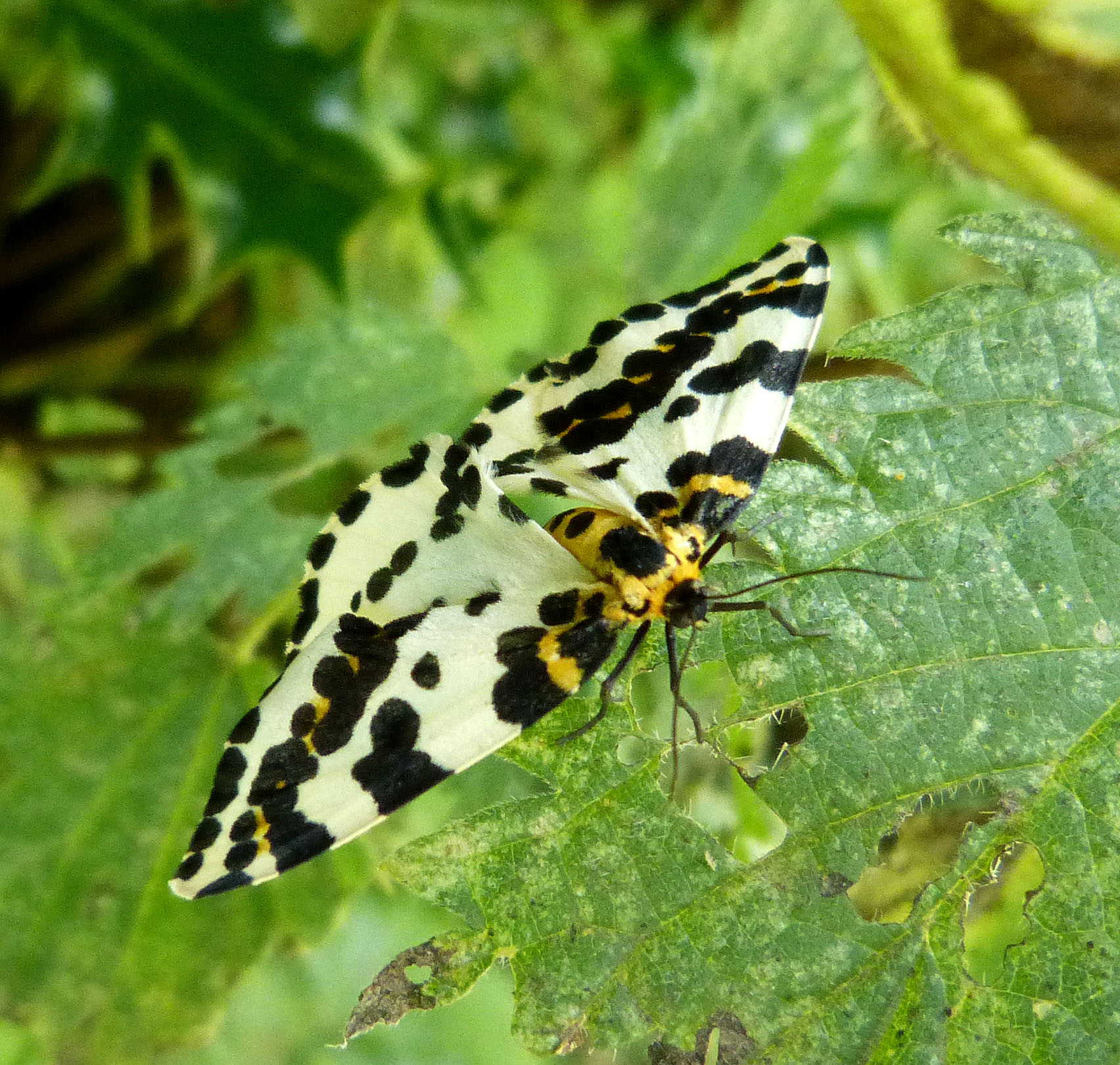
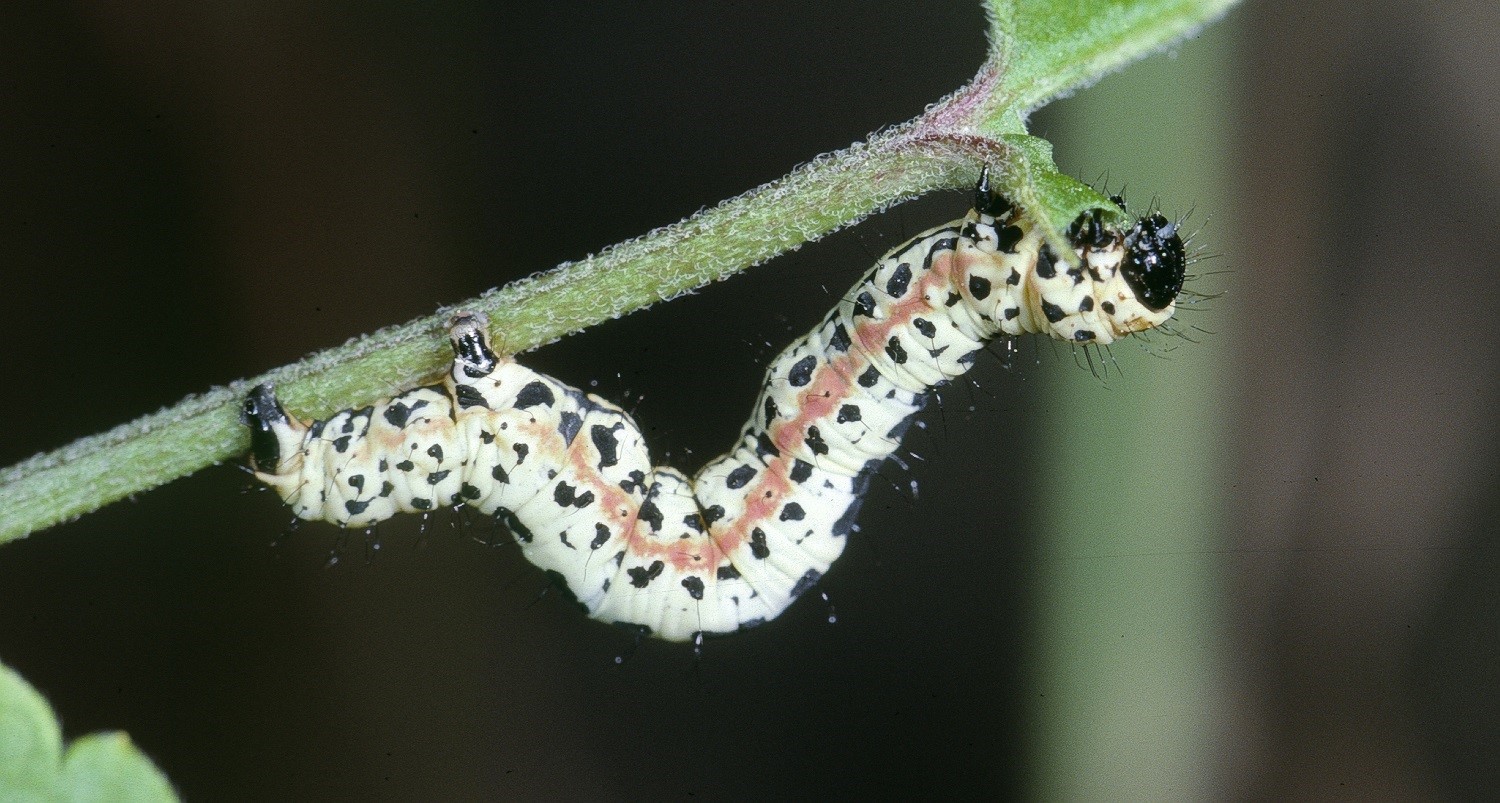
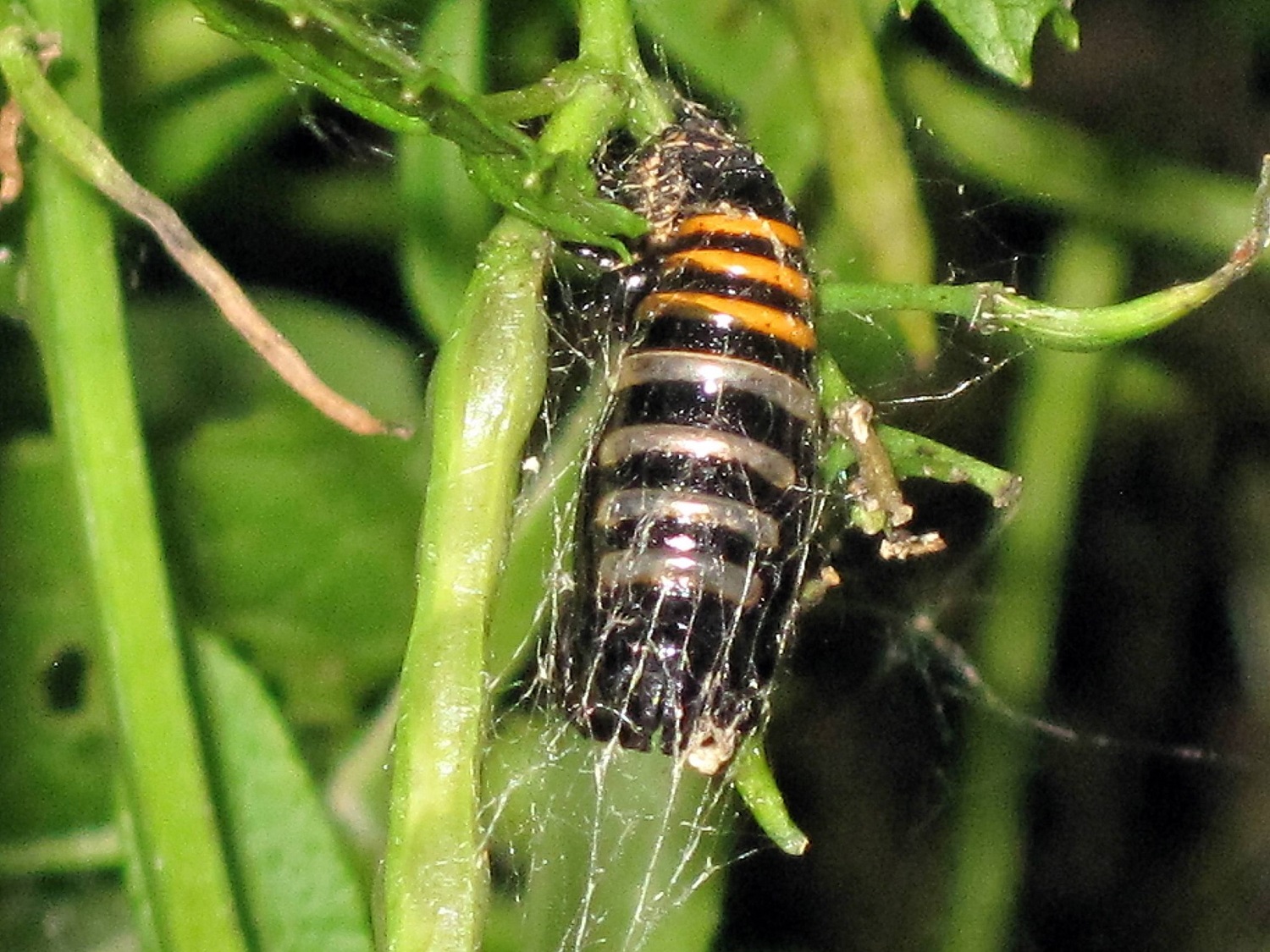
Magpie moth, imago, larva and pupa.
The bold colours of the magpie moth larva, pupa and adult, warn predators that it will taste bad. Birds soon learn to be wary of this species, and even spiders will leave an adult magpie moth uneaten in its web. In recent years, numbers have declined and it is now officially a scarce species, except in north and west Scotland, where huge population explosions sometimes occur on heather moorland.
Header image: magpie moth by Ben Sale (CC BY 2.0) via Wikimedia Commons

